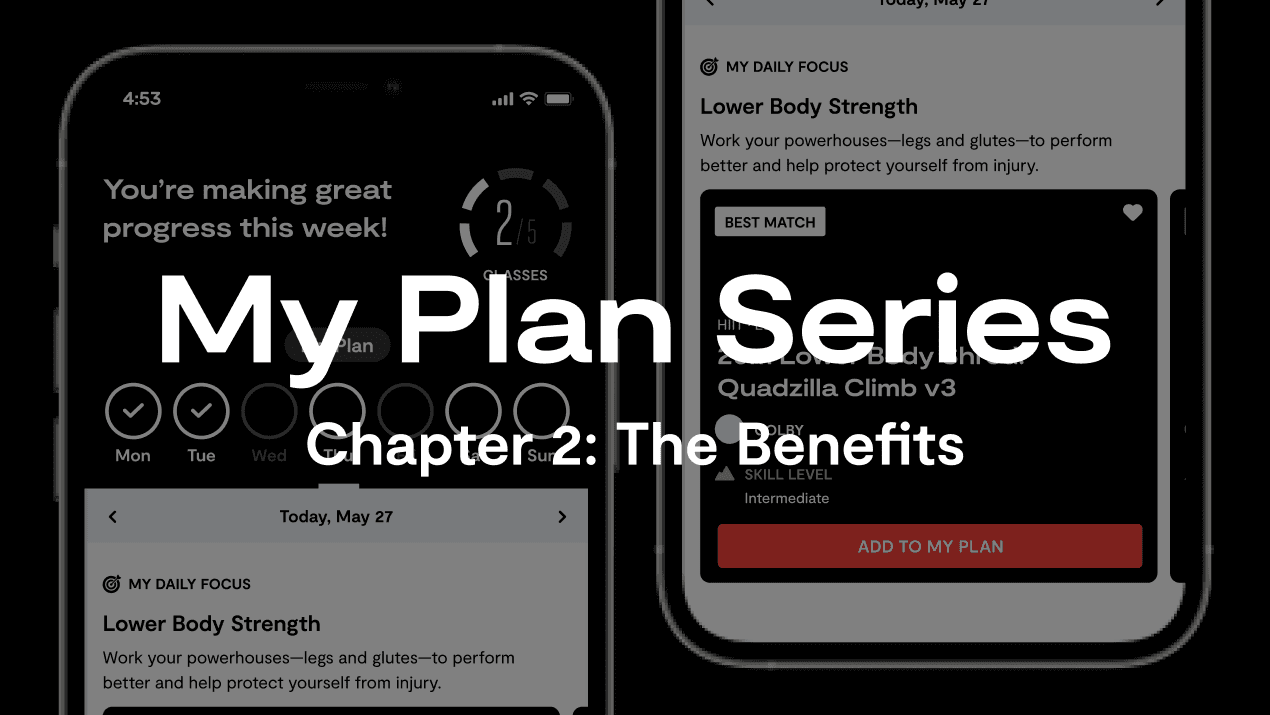From commercial gym programs to online how-to fitness videos, you’ve probably seen the term “HIIT” tossed around in the health and fitness realm. However, not everything advertised as such is a
true HIIT workout. So, what is a HIIT workout? Why is HIIT training so popular? And importantly, how does one get started?
Wait, What is a HIIT Workout, Anyway?
HIIT, or high-intensity interval training, combines short bursts (a.k.a. “intervals”) of strenuous exercise that gets the heart rate up, alternated with shorter periods of gentle exercise or rest.
There are two important distinguishing factors for HIIT. First, it should ideally get your heart rate up to at least 80% of its maximum capacity for anywhere from one to five minutes. HIIT workouts are typically short. As a general rule, the more intense the workout, the shorter the duration of the workout interval. But there are no absolute, hard-and-fast rules about the duration of intervals, or how long they should be in total. The principle is pushing your heart rate higher than a constant-paced, steady-state workout would.
Second, the rest time between intervals should be equal to or less than the time of exercise.
Today, HIIT training is popular in commercial gyms and fitness centers. But the training format has existed since the early 1900s, primarily designed to help build athletes’ endurance.
Types of HIIT Training
One of the great things about high-intensity interval training is that it can be applied to all methods of exercise. If you already have a favorite exercise or workout that suits you — jogging, swimming, cycling, cross-training — stick to that! You don’t need to learn anything new or force yourself into doing workouts that don’t appeal to you. The key is simply to dial up the intensity to push your heart rate, maximize calorie burn, and build endurance.
You can also apply these more specific approaches and tweak them to build your own HIIT program.
1. Tabata – Arguably the most popular type of HIIT training format, this was developed in the late 1990s by Dr. Izumi Tabata. The idea is to do high-intensity exercise for 20 seconds, rest for 10 seconds, and repeat until you reach four minutes. After this, rest for two minutes, and then move on to the next exercise.
2. Endurance-based HIIT (walking, running, cycling, rowing) – First, determine your baseline – a normal pace that you can comfortably sustain for 30 minutes to an hour. Then, transform it into a HIIT workout by starting with a 1:1 work-rest ratio (one minute of hard-paced exercise, followed by one minute of gentle exercise or rest). After warming up, proceed with doing your workout at a higher intensity than your baseline. Sustain this for one minute, and then slow down to your baseline pace for one minute. Over time, you’ll build your endurance and be able to lengthen your work intervals. For example, try extending your high-intensity interval to three to four minutes with only one minute of rest.
3. Resistance circuit-based HIIT (bodyweight and weight training) – Similarly, establish your baseline by identifying three to five exercises that you can comfortably execute with the correct form. Some examples of exercises that are suitable for this format are push ups, ring rows, back extensions, goblet squats, and standing Russian twists. Intersperse workouts with a short rest interval, typically 30 to 60 seconds of rest per one to two minutes of work.
4. Micro-intervals – This format is a HIIT favorite because it uses extremely short but high-intensity intervals. Both the workout and rest intervals are under a minute. This prevents lactic acid from compounding in the blood as fast as other interval training formats.
What are the Benefits?
Improved Cardiovascular Respiratory Health
HIIT helps to boost your VO2 max, the endurance measurement that factors in the body’s max capacity for oxygen usage, in a shorter timeframe than with a constant-paced exercise. A
2016 study comparing two test groups found that the group that exercised for only 10 minutes with rest intervals saw the same improvement in oxygen uptake as the group that exercised for 50 minutes at a consistent pace.
Furthermore, a
2014 study conducted on obese and overweight sedentary adults found that doing three workouts per week (30-minute workouts including three sets of 20-second work intervals of fast pedaling on a stationary bike) caused an improvement in their VO2 max.
Boosts Metabolic Health
A
2015 study conducted on previously sedentary adults found that high-intensity interval training can boost measures of metabolic health such as blood sugar, blood pressure, and cholesterol.
Fat Loss
HIIT training may be a more efficient way to shed body fat compared to steady-state exercises, like jogging. A
2012 study on overweight adult males found that participants who engaged in 12 weeks of HIIT workouts (three times a week, 20 minutes per session) had “significantly reduced total, abdominal, trunk, and visceral fat” compared to the control group.
Improved Mental Health
Exercise, in general, is known to promote happy hormones and benefit mental health, but HIIT may be particularly helpful. A
2019 meta-analysis of 12 studies suggests that high-intensity interval training can benefit people experiencing mental illnesses, including minimizing the gravity of depression.
Additionally, a
2015 study that examined the effects of HIIT training on those with chronic schizophrenia found that those who completed the eight-week program (18 of 20) showed improvements in mental health scores, including lower levels of social avoidance and depression.
More Efficient and Less Time Consuming
As previously mentioned, HIIT workouts are typically short. They work high-intensity activities into a limited timeframe, pushing the body to achieve the same results in less time compared to consistent-paced exercise. According to a
2014 study, working out even just three times a week for 30 minutes per session (including 10 minutes of high-intensity exercise) can improve cardiovascular and metabolic health, boost oxygen flow to the muscles, and enhance exercise tolerance.
Why is it So Effective?
1. Versatility – The core pillar of HIIT involves pushing your heart to ideally 80% of its maximum capacity. The format can be applied to all exercise methods and can be done by people of different fitness levels and physical conditions. A physically fit and active person can do HIIT, but so can an overweight, sedentary person. It’s a matter of understanding your unique limits and building endurance over time.
2. Excess Post-Exercise Oxygen Consumption (EPOC) – Also called “afterburn,” this is the period after exercise when the body’s metabolism remains high and continues to burn more calories than being in a sedentary state. This is approximately a two-hour window after the workout as the body slowly goes back to its pre-training state. Because of the vigorous and strenuous nature of HIIT, the EPOC is slightly greater than constant-state exercise and
can add about 6% to 15% more calories to the overall workout burn.
3. Time Efficiency – HIIT can reap similar results as a consistent-paced workout but with a lower time investment. It’s a viable option for those who do not have the time, or the patience, to do lengthy workouts.
Is it Right for Me?
As with any training format or exercise, you may be wondering if HIIT is suitable for you or if it can be integrated into your workout routine. The short answer is yes, unless you have severe health conditions, in which case we recommend you consult your doctor.
Research has shown that 20-minute HIIT workouts can burn around the same number of calories as longer, consistent-paced exercise. Additionally, high-intensity training greatly disrupts the body’s homeostasis, causing it to use more energy and oxygen to return to its pre-exercise state. (When we talk about your body’s homeostasis, we’re referring to the stable, steady condition in which your body is operating to survive day to day). Your bodily systems aim to maintain this state, despite what’s happening in the environments around you.
For those who have lower-body conditions such as hip or knee pain, consider doing cardio exercises that are easy on weight-bearing joints, such as stationary cycling or swimming. A
2018 study involving a HIIT cycle program for adults with knee osteoarthritis found greater improvements in the participants’ physical functions compared to continuous moderate cycling. HIIT workouts can also be beneficial for those suffering from other kinds of arthritis, such as psoriatic arthritis and rheumatoid arthritis.
For those who have heart or lung conditions or other health concerns, first consult your doctor before doing a HIIT program. It’s worth noting, though, that a
2018 study found that high-intensity interval training appears safe with a low chance of adverse effects for those with cardiovascular concerns.
Workouts with Tempo
The awesome thing about high-intensity interval training is that it can be done at home with minimal to no equipment needed. Whether you’re using
Tempo Studio or
Tempo Move, our
3D Tempo Vision technology will guide you every step of the way to ensure you execute the correct form, train safely and efficiently, and make the most of every workout. Plus, we have live and on-demand virtual
workout classes, including HIIT, so that you can get the benefits of a gym and personal trainer in the comfort of your home.
Check out Tempo’s
collection of award-winning AI-powered home gym equipment to get you in your best shape today!











